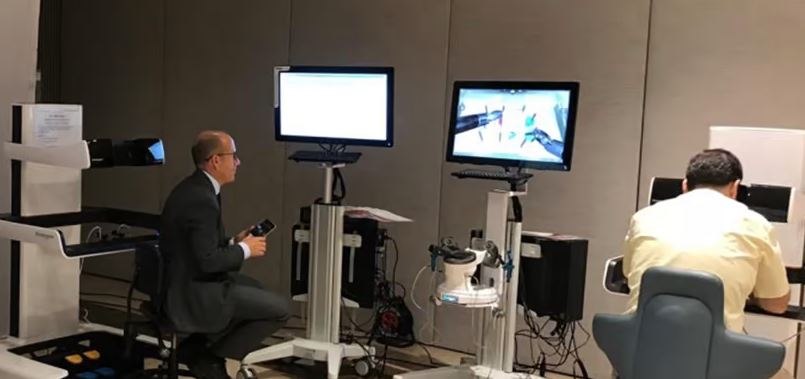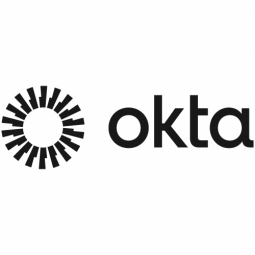Customer Company Size
Large Corporate
Region
- Asia
Country
- Hong Kong
Product
- Okta Single Sign-On
- Okta MFA
- Okta API Access Management
Tech Stack
- Okta APIs
- Okta SDK
Implementation Scale
- Enterprise-wide Deployment
Impact Metrics
- Customer Satisfaction
- Digital Expertise
- Productivity Improvements
Technology Category
- Cybersecurity & Privacy - Identity & Authentication Management
- Platform as a Service (PaaS) - Connectivity Platforms
Applicable Industries
- Education
Applicable Functions
- Business Operation
Services
- System Integration
About The Customer
City University of Hong Kong (CityU) is a leading academic institution located in the heart of Hong Kong. Despite being relatively young, it has established a strong reputation as a center for research and innovation on the global stage. CityU ranks #4 on a global list of the 'Top 50 under 50' universities, highlighting its rapid growth and academic excellence. The university caters to a diverse student body, with 26,000 full-time students and 4,000 staff members. CityU is known for its wide-ranging academic offerings and its commitment to research and industry partnerships. The institution boasts a multicultural staff from 35 countries around the world, further enhancing its global appeal. CityU's mission is to provide a world-class education and foster an environment of innovation and collaboration, making it a prominent player in the academic landscape.
The Challenge
City University of Hong Kong (CityU) faced a significant challenge with its legacy systems, which involved disparate logins and identities across various systems for students, staff, and alumni. Each user had to manage multiple logins for different purposes, leading to a fragmented user experience. The university's fast-growing and wide-ranging academic setting often resulted in technology solutions being added in a piecemeal fashion to solve specific problems in different departments. Over time, these disparate systems led to poor integration and little flexibility across the institution. Joe Lee, Assistant IT Manager (IAM) at CityU, recognized the need to unify the governance of user identity systems to improve user and IT management. The challenge was to find a way to unify all these separate applications and services under a Single Sign-On platform, which would simplify and improve the overall experience for all users.
The Solution
CityU partnered with Master Concept to implement an Okta-powered CIAM solution that would deliver a single sign-on experience for all staff, students, and alumni. The solution involved using Okta Single Sign-On, MFA, and API Access Management to create a new user portal that supports legacy, on-prem, and cloud applications across both desktop and mobile platforms. The implementation process was swift, with the proof of concept completed in just a few weeks. The deployment was carefully timed to avoid interfering with critical university periods, such as enrolment windows and exam periods. Okta's leadership in the Gartner Magic Quadrant and its support for various second-factor solutions were key factors in CityU's decision to choose Okta as their identity and access management provider. The new system allows CityU to focus on providing top-notch computing services while outsourcing identity and access management to Okta, ensuring industry best practices are followed.
Operational Impact
Quantitative Benefit

Case Study missing?
Start adding your own!
Register with your work email and create a new case study profile for your business.
Related Case Studies.

Case Study
Revolutionizing Medical Training in India: GSL Smart Lab and the LAP Mentor
The GSL SMART Lab, a collective effort of the GSL College of Medicine and the GSL College of Nursing and Health Science, was facing a challenge in providing superior training to healthcare professionals. As clinical medicine was becoming more focused on patient safety and quality of care, the need for medical simulation to bridge the educational gap between the classroom and the clinical environment was becoming increasingly apparent. Dr. Sandeep Ganni, the director of the GSL SMART Lab, envisioned a world-class surgical and medical training center where physicians and healthcare professionals could learn skills through simulation training. He was looking for different simulators for different specialties to provide both basic and advanced simulation training. For laparoscopic surgery, he was interested in a high fidelity simulator that could provide basic surgical and suturing skills training for international accreditation as well as specific hands-on training in complex laparoscopic procedures for practicing physicians in India.

Case Study
IoT platform Enables Safety Solutions for U.S. School Districts
Designed to alert drivers when schoolchildren are present, especially in low-visibility conditions, school-zone flasher signals are typically updated manually at each school. The switching is based on the school calendar and manually changed when an unexpected early dismissal occurs, as in the case of a weather-event altering the normal schedule. The process to reprogram the flashers requires a significant effort by school district personnel to implement due to the large number of warning flashers installed across an entire school district.

Case Study
Implementing Robotic Surgery Training Simulator for Enhanced Surgical Proficiency
Fundacio Puigvert, a leading European medical center specializing in Urology, Nephrology, and Andrology, faced a significant challenge in training its surgical residents. The institution recognized the need for a more standardized and comprehensive training curriculum, particularly in the area of robotic surgery. The challenge was underscored by two independent studies showing that less than 5% of residents in Italian and German residency programs could perform major or complex procedures by the end of their residency. The institution sought to establish a virtual reality simulation lab that would include endourological, laparoscopic, and robotic platforms. However, they needed a simulator that could replicate both the hardware and software of the robotic Da Vinci console used in the operating room, without being connected to the actual physical console. They also required a system that could provide both basic and advanced simulation training, and a metrics system to assess the proficiency of the trainees before they performed surgical procedures in the operating theater.

Case Study
Edinburgh Napier University streamlines long-distance learning with Cisco WebEX
• Geographically dispersed campus made in-person meetings costly and inconvenient.• Distance-learning programs in Malaysia, India, and China required dependable, user-friendly online tools to maximize interaction in collaborative workspaces.• Virtual learning environment required a separate sign-in process, resulting in a significant administrative burden for IT staff and limited adoption of collaboration technology.

Case Study
8x increased productivity with VKS
Before VKS, a teacher would spend a lot of time showing a group of 22 students how to build a set of stairs within a semester of 120 hours. Along with not leaving the teacher much time to provide one-on-one support for each student to properly learn carpentry, it also left a considerable amount of room for error. Key information would be misinterpreted or lost as the class was taught in the typical show-and-tell way.

Case Study
Scalable IoT Empowering GreenFlex's Sustainable Growth
GreenFlex, a company that supports sustainable development, decarbonization, and energy efficiency, faced several challenges in its quest to expand its business. The company needed to deploy a robust and sustainable IoT technology to support its growth. It was crucial for them to monitor and control devices at customer sites in a safe and reliable manner. They also needed to integrate devices across a range of communication protocols and gather and act on data to meet efficiency targets. GreenFlex had previously built IoT capabilities into its digital platform, GreenFlexIQ, to monitor and manage customer sites remotely. However, they soon realized that they needed a new platform to support their ambitions. They needed a platform that could scale to connect more devices for production management and make it easier for the operations team to manage devices in the field.







